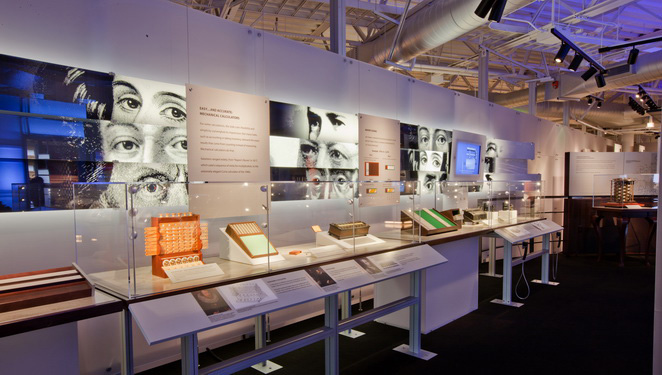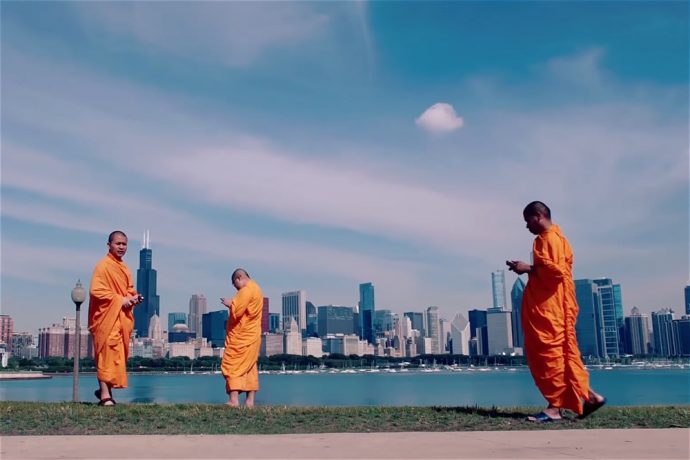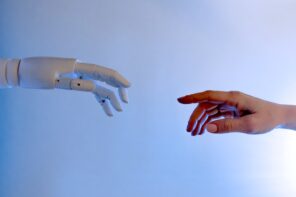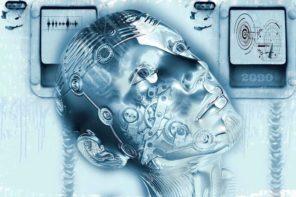Werner Herzog’s new documentary, Lo and Behold, Reveries of a Connected World, begins with religion and never really leaves it behind.
As the film opens we are ushered down a hall at UCLA by Leonard Kleinrock, a computer scientist, on our way to seeing the first computer to communicate over the internet. Upon entering the room that was the net’s place of origin, Kleinrock looks into the camera and tells us: “We are now entering a sacred location…a holy place.”
Looking at a notebook that casually records the first internet connection on October 29, 1969, Kleinrock makes a comparison to the guy on Columbus’s ship who first spotted land and then made a note in the ship’s log, adding, “that document and this document have the same equivalent importance.”
This is not a documentary that builds an argument or moves along a linear path, rather it’s a series of “reveries” (as the subtitle alerts us) on the many ways the internet surrounds and pervades our lives. Herzog does not try to retell well-known stories (nothing here on Google or Facebook) as others have told those stories well. With the exception of Elon Musk (who Herzog can’t seem to figure out), there’s not a single CEO or entrepreneur interviewed in the documentary. Instead, Herzog finds people who have a unique perspective on the changes brought by a digitally connected world, and who will rise to the challenge of his off-angle questions (“does the internet dream of itself?”).
Throughout these reveries religion never disappears. In one segment, dedicated to the dark side of the net, we meet a family whose daughter died in a gruesome car crash. When photos of the young woman’s body were posted online the family found they had no way to take the horrific images down. The somber family, interviewed together in their home, were clearly traumatized by the experience.
The mother finally has this to say:
I have always believed that the internet is a manifestation of the Antichrist… or evil itself… It is the spirit of evil. I feel like it’s running through everybody on earth and its claiming its victories in those people who are also evil.
This dark view is juxtaposed with scenes that are more sanguine, to say the least, about the net’s impact. We see how crowdsourcing aids in solving scientific puzzles that have stumped the best researchers. We meet a young creator of a robotic soccer team, who readily admits his “love” for robot 8, the Lionel Messi among his robots. In the case of self-driving cars we are told that while a human being might individually learn from a driving mistake, every new self-driving car will learn from a driving mistake made by a self-driving car.
The internet, unlike humans, has the capability for unending improvement; seen this way it’s a benevolent force, empowering people of good will and improving the world.
Herzog doesn’t spend much time exploring the everyday experience of the internet—whether social media or the omnipresent smartphone or Pokémon Go. He’s drawn instead to online addicts and people who are convinced they have a high sensitivity to the radio waves that transmit the internet.
One everyday scene, however, so fascinated Herzog that it earned a place in Lo and Behold. Behind an image of Tibetan monks staring into their phones with the Chicago skyline behind them Herzog asks “Have the monks stopped meditating? They all seem to be tweeting.”
But the power of the internet is not in a few addicts who can’t pull themselves away from their screens, rather it’s in its omnipresence. Herzog avoids the everday aspect of the net (and attendant statistics) looking instead for the colorful and odd individuals with stories to tell. As a result, Herzog has created a documentary which is highly suggestive, but doesn’t get to the center of the cultural importance of the internet.
No one will confuse this documentary with the work of a sociologist like Sherry Turkle, but with Lo and Behold Herzog has given us a good start at thinking about how the net is pushing us to rethink our values and morals and transforming the invisible assumptions that shape the way we live and experience the world.
And Herzog sees the relation of the net to religion, featuring a statement by cosmologist Lawrence Krauss: “We’re going to have a revolution not only in our technology, but in our theology. We don’t even have a name for it.”
It can certainly be argued that the internet has taken over domains we traditionally assign to theology. For example, it has captured our imagination of the future, both for good and evil. Herzog supplies us with apocalyptic speculation as to the destruction that will result from a sizeable solar flare that might destroy our tech infrastructure. Then there’s the Dark Internet and its mysterious forces that might someday bring down the world we take more and more for granted (which feels like an updated form of spiritual warfare). When we collectively dream of a positive future for humanity it often begins to look like the interplanetary human existence proposed by Elon Musk.
But does the story of the internet need to be told with all these religious resonances?
A visit to the Computer History Museum in Mountain View, California (down the street from the Googleplex) uses thousands of objects to tell the story of computers and information technology. The museum presents the development of technology and the internet as a result of the inexorable working out of Moore’s Law. As the number of transistors on a chip grew exponentially, computers became smaller, and then they became “personal,” and then they fit in our pockets as a phone.

“Revolution: The First 2000 Years of Computing,” at the Computer History Museum
In this telling, the internet was not a unique “Columbus” event, but an evolution dependent on the shrinking size and growing capacity of computers. Walking through the Computer History Museum it’s not likely that religious concepts will press to the front of your mind. The marvel is in the human ingenuity to create such machines and work out their possible uses.
The point of view presented by Herzog is more closely related to that of the “Church of Google” (a website that was taken down, but which has been recently revived as the Reformed Church of Google). The argument of the Church is that the search engine is the closest thing to God that humans will ever know: Google is present everywhere, so it’s omnipresent; Google knows pretty much everything we ask it, so it’s omniscient; Google professes to do no evil, so it’s omnibenevolent. On it goes.
Another tech documentary, Transcendent Man (2009), on the life and thought of Ray Kurzweil, offers yet another view of the internet’s relationship to theology. Assuming the continued operation of Moore’s Law, Kurzweil believes that in just a matter of years we will find ourselves in the midst of an event known as the Singularity, at which point artificial intelligence will take off on its own and recreate our world. Kurzweil sets out predictions of his own personal immortality that an ancient Egyptian would have easily understood. Like in Herzog’s Lo and Behold, at points the line is crossed from tech speculation into theological assertion.
Herzog arrived at this religion-inflected point of view from his own longstanding sensibility: anyone who knows this auteur’s body of work will recognize the connections between Lo and Behold and his earlier films. We can reach all the way back to Fata Morgana (1971) to see Herzog’s insistence on finding or creating new myths for our time.
In Lo and Behold this approach easily allows Herzog to escape the bonds of technical exposition and present instead the emotions and passions that swirl around that thing we call the internet.





